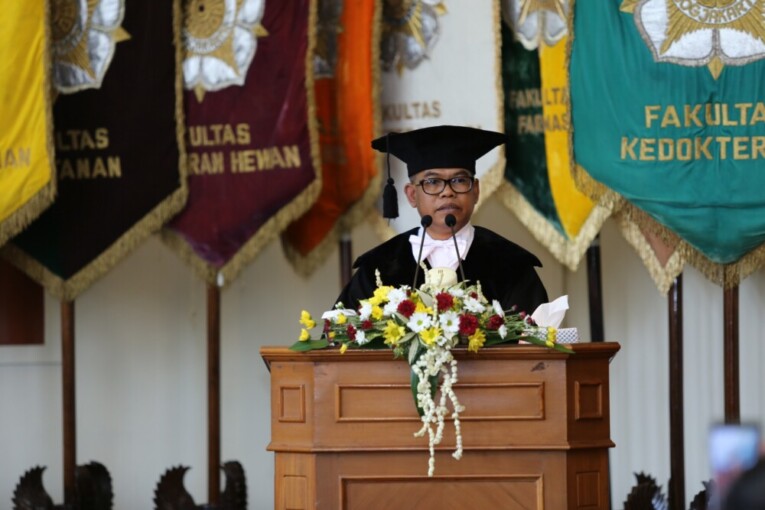
Infectious diseases are still serious problems in Indonesia. Human dynamics followed by microbial dynamics that cause diseases require new ways to prevent and understand how diseases emerge, and knowing interactions between humans and germs and infectious disease treatment.
“It is inevitable that human lives are on the risk now due to human ability to destroy microbes,” said Prof. dr. Tri Wibawa, Ph.D., Sp.MK, in the Senate Hall UGM on Wednesday (10/1).
Chairman of Microbiology Department at Faculty of Medicine UGM touched upon this issue whilst being inaugurated as professor of Faculty of Medicine UGM. The man who is also Secretary of Research Ethics Commission of the Faculty and Dr. Sardjito General Hospital delivered his professorship address titled Implication of Human Genetic Interaction – Pathogens in Infectious Disease Management.
Tri Wibawa said there were threats that antimicrobe that had been used for over 80 years as the main weapon to destroy microbes would no longer be effective due to the microbial immunity of the antimicrobial drugs, or called as antimicrobial resistance.
According to Tri Wibawa, antimicrobial resistance happened due to selection pressure when antibiotics are used in clinics, cattle, home industry and agriculture. Each use of antibiotics adds on to the selection pressure.
This mechanism can be found in treatment using short term (7 days) antibiotics for patients who have febrile neutropenia. The process of immunity to antibiotics can be explained by making the analogy of a population which consists of two bacterial strains.
Tri Wibawa explained bacteria vulnerable to antibiotics are dominant in those population while only a small part of bacterial population have genetic mutation and are resistant to antibiotics. Hence, antibiotics can act as selection pressure in this bacterial population.
“The end result was the occurrence of domination of mutant bacteria that are resistant to antibiotics. Meanwhile, bacteria that are vulnerable to antibiotics are eradicated from the population due to the antibiotics. This type of resistant bacteria can be found in the host body, human or animal, which in turn may circulate in their environs,” said the husband of Retno Muliawati and father of two.
Tri Wibawa concluded that interaction between human and microbe, whether bacteria, virus or fungi, had caused reciprocal interaction in evolution. Both follow the evolution on their own, but both have lived for thousands of years so their interaction is inevitable up to the level of genetic material that causes co-evolution.
The interaction causes wider implication, which is immune response, pathogenesis, vulnerabilities to infection, and antimicrobial resistance. In the future, interaction between human and pathogen needs to be assessed in order to prevent and treat infectious diseases,” he concluded.


